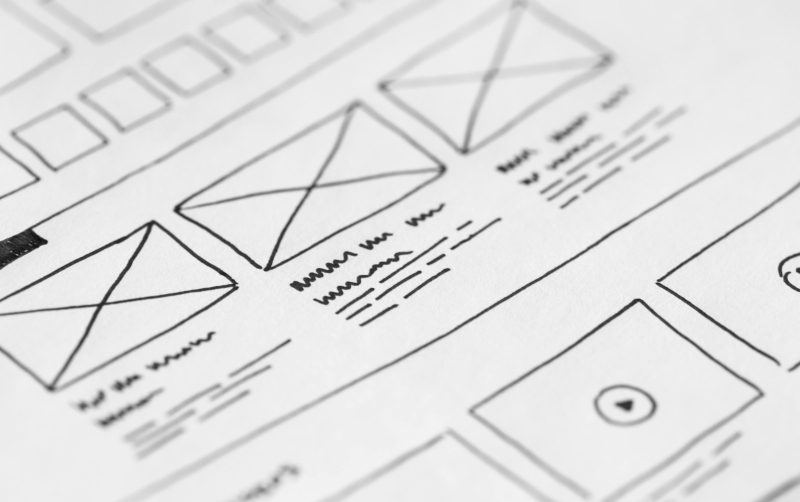The Impact of UI/UX on Conversions and User Retention

Understanding UI and UX
What is UI (User Interface)?
User Interface refers to the visual elements of a platform—think buttons, fonts, colors, and overall layout. It’s the first thing users see when they interact with your website or app, and it sets the tone for their entire experience. A well-designed UI ensures that users can interact with the platform effortlessly and intuitively.
What is UX (User Experience)?
UX, on the other hand, focuses on the user’s overall journey. It’s about ensuring that every interaction is meaningful and seamless, from landing on a homepage to completing a purchase. UX design prioritizes usability, functionality, and accessibility, ensuring users have a pleasant experience at every touchpoint.
The Role of UI/UX in Conversions
First Impressions Matter
The old adage "you never get a second chance to make a first impression" rings especially true in digital design. Within the first five seconds of visiting a platform, users decide whether to stay or leave. An aesthetically pleasing interface can immediately build trust and encourage users to explore further.
Simplified Navigation
A confusing layout or poorly structured menu can frustrate users, driving them to competitors. Simplified navigation with clear labels, logical flow, and easy-to-spot CTAs (calls-to-action) ensures users can find what they need without any hassle.
Mobile Optimization
With mobile commerce dominating in 2024, ensuring your platform is mobile-friendly is critical. Responsive designs that adapt seamlessly to different screen sizes not only improve the user experience but also drive higher conversion rates.
UI/UX and User Retention
Creating a Seamless Experience
Retention thrives on simplicity and satisfaction. If users find it easy to navigate your platform and achieve their goals without frustration, they’re more likely to return. Consistent design across pages and devices further strengthens user loyalty.
Personalization
Personalization is a game-changer for retention. From tailored product recommendations to dynamic interfaces that adjust to user preferences, personalization makes users feel valued and understood.
Building Emotional Connections
Design isn’t just about functionality; it’s also about how it makes users feel. The psychology behind colors, fonts, and visuals can evoke trust, excitement, or calmness, creating emotional connections that enhance loyalty.
Key UI/UX Elements That Boost Conversions
Clear and Actionable CTAs
Your calls-to-action should stand out, guiding users toward desired actions like signing up or making a purchase. Use contrasting colors, engaging text, and strategic placement to make CTAs irresistible.
Fast Loading Times
Speed is non-negotiable. Research shows that even a one-second delay in load time can result in a significant drop in conversions. Optimizing performance is critical for both desktop and mobile users.
Trust Signals
Badges like “Secure Checkout,” customer reviews, and trust seals reassure users that your platform is safe and reliable, encouraging them to proceed with transactions.
UI/UX Trends for Better Retention in 2024
Dark Mode Options
Dark mode isn’t just stylish—it’s easier on the eyes and saves battery life on devices. Offering this option can enhance the user experience, especially for night-time browsing.
Microinteractions
Subtle animations, such as a heart icon filling up when clicked, add personality and delight to a platform. These small details can make interactions more engaging and memorable.
Voice and Gesture Interfaces
With voice assistants and gesture-based navigation becoming mainstream, incorporating these features can make your platform more accessible and user-friendly.
The ROI of Investing in UI/UX
Increased Conversions
A well-designed platform doesn’t just look good—it performs well. By reducing friction and making the user journey seamless, you’re more likely to convert casual visitors into paying customers.
Higher Retention Rates
Satisfied users are loyal users. When people enjoy their experience with your platform, they’re more likely to return and recommend it to others.
Reduced Support Costs
Intuitive design reduces the need for customer support, as users can navigate your platform independently without confusion or frustration.
Conclusion
UI and UX are the unsung heroes of digital success. They don’t just make your platform look good—they drive conversions, foster loyalty, and ensure long-term growth. By prioritizing user-centric design, businesses can thrive in an increasingly competitive landscape.
FAQs
- What’s the difference between UI and UX?
UI focuses on the visual elements, while UX emphasizes the overall user journey and experience.
- How can poor UI/UX hurt conversions?
Confusing layouts, slow load times, and unresponsive designs frustrate users, leading them to abandon your platform.
- What tools can businesses use to improve UI/UX?
Popular tools include Figma, Sketch, Adobe XD for design, and Hotjar or Google Analytics for user insights.
- How does mobile optimization impact user retention?
Mobile-friendly designs ensure users have a seamless experience on any device, increasing satisfaction and retention rates.
- What are the key trends shaping UI/UX in 2024?
Trends include dark mode, microinteractions, voice interfaces, and AI-driven personalization.






